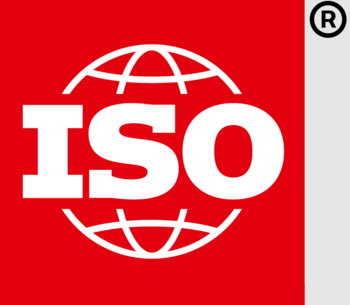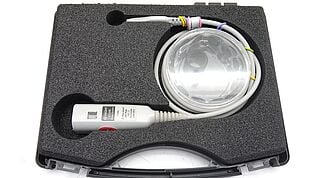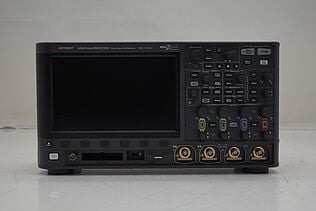- Introduction
- What is a Calibration Certificate?
- Why Calibration Certificates Matter in Electrical Engineering
- Keysight's Official Used Equipment Store: A Trusted Source for Calibrated Equipment
- Explore Our Range of Certified Refurbished Equipment
- Interpreting Calibration Certificates from Keysight
- Ensuring Authenticity: Recognizing Genuine Keysight Calibration Certificates
- How to Leverage Calibration Certificates in Your Operations
- The Importance of Regular Recalibration
- Conclusion: Embracing Accuracy and Reliability with Keysight Calibration Certificates
- Whenever You’re Ready, Here Are 5 Ways We Can Help You
- Certified Refurbished Equipment On Sale Right Now
Imagine you're an engineer working on a critical project, and your oscilloscope or signal analyzer returns inconsistent readings. How do you determine if your gear is faulty or if the issue lies elsewhere?
Calibration certificates serve as your lifeline, vouching for the accuracy and reliability of your instruments. When these certificates come from a reputable source like Keysight, you not only gain peace of mind but also ensure the integrity of your entire project.
In this ultimate guide, we'll dive deep into understanding and leveraging calibration certificates from Keysight's used store, making sure you never have to doubt your equipment's performance.
What is a Calibration Certificate?
A calibration certificate is an official document that outlines the performance characteristics and accuracy of a testing instrument.
This certificate confirms that the equipment has undergone rigorous testing against established standards, ensuring it performs measurements within specified tolerances.
In essence, a calibration certificate is a stamp of approval for your test equipment's reliability and precision.
Ensures Test Equipment Accuracy
When you hold a calibration certificate from a trusted source like Keysight, you can confidently assert that your instrument will generate accurate and consistent results. Any deviation from expected performance indicates not an equipment failure but perhaps a problem within the system you're testing.
Facilitates Compliance and Regulations
Whether you're in aerospace, automotive, or healthcare, industry-specific regulations often mandate the use of calibrated equipment. A calibration certificate serves as proof of compliance, shielding you from legal repercussions and ensuring seamless audits.
Elevates Quality Control
In manufacturing and R&D settings, quality control is paramount. A calibration certificate guarantees that your instruments measure accurately, contributing to the development and production of high-quality products.
Enhances Testing Credibility
Research and testing protocols rely on accurate data. With a calibration certificate, you validate the credibility of your findings, fortifying your professional reputation and the integrity of your work.
Why Calibration Certificates Matter in Electrical Engineering
In the realm of electrical engineering, calibration isn't just a buzzword; it's a necessity.
It acts as the gatekeeper that ensures your equipment like oscilloscopes, signal generators, spectrum analyzers and others, perform optimally and within industry standards, serving as a safeguard against inaccuracies and risks.
Here's why calibration certificates are indispensable in electrical engineering:
- Maintains industry standards
Electrical engineers often work on projects that require high levels of precision, from developing electronic components to setting up power grids. A calibration certificate ensures that your test equipment aligns with both national and international standards, facilitating a universal language of accuracy across different platforms and projects. - Prevents faulty readings
Uncalibrated or poorly calibrated equipment can produce misleading or incorrect data. These errors not only waste time but also resources, as you might troubleshoot non-existent problems or overlook actual issues. With a calibration certificate from Keysight, you ensure your instruments offer precise readings, allowing for efficient and effective problem-solving. - Mitigates safety risks
Imagine working on high-voltage electrical systems with uncalibrated equipment. The inaccuracies can lead to severe consequences, ranging from equipment failure to endangering human lives. Calibration certificates act as a layer of protection, confirming that your instruments measure electrical parameters accurately, thereby minimizing safety risks. - Preserves project integrity
Inaccurate measurements could derail your entire project, causing delays and incurring additional costs. Calibration certificates provide the assurance you need to move forward, knowing that your equipment will not compromise the project's integrity. - Enhances client trust
When you can vouch for the accuracy of your instruments, you not only affirm the quality of your work but also build trust with clients and stakeholders. A calibration certificate stands as a testament to your commitment to precision and excellence.
Ignoring calibration could spell disaster, compromising safety and quality. However, opting for equipment accompanied by calibration certificates from reputable sources like Keysight ensures that you're always on the right track. So make the smart choice—don't compromise on calibration.
Keysight's Official Used Equipment Store: A Trusted Source for Calibrated Equipment
Keysight Used Store is the most reliable option, offering high-quality refurbished equipment and a comprehensive "Calibration Services Toolkit".
Each refurbished unit undergoes rigorous calibration, while the calibration certificates bear validations from reputed third-party bodies like JCSS, CNAS, Poverka, UKAS, ANAB, and many more.
Elevate Your Calibration Experience with Keysight
- Support portal: Enjoy personalized access for service requests, case management, calibration certificates, technical articles, and more.
- Worldwide service locations: Benefit from over 70 service locations that employ the same automated calibration procedures and repair diagnostics, ensuring consistent test results globally.
- ISO/IEC 17025 scopes of accreditation: Meet both local and global accreditation needs with endorsements from 18 local accreditation bodies and adherence to international standards like ISO/IEC 17025 and regional ones like ANSI Z540.3.
- Metrology and standards: Stay ahead of the compliance curve with Keysight metrologists who are in sync with international standards organizations.
- Calibration certificates: Access your calibration certificates and measurement reports anytime, anywhere, through both the original factory and our global network of service centers.
- Measurement uncertainty calculation: Gain insights into the ISO/IEC Guide 98-3:2008 for Expression of Uncertainty in Measurement.
- PathWave calibration advisor: For selected models like Infiniium Real-Time Oscilloscopes, Network, Signal, and Noise Figure Analyzers, receive on-screen calibration due reminders.
- YouTube Videos: Expand your knowledge by viewing Keysight Services videos, particularly the ones on our Calibration Services channel.
Key Features and Advantages of Sourcing from Keysight's Official Used Equipment Store
- Thorough calibration: Keysight ensures exhaustive measurement of every specification and option, every single time.
- Flexible compliance options: Tailor your calibration to meet various metrology standards, including ISO 17025:2005 and ANSI Z540.3.
- Customized calibration reports: Choose from a wide array of calibration options to fit your specific Keysight instruments.
- Global accreditation: Receive calibration certificates that satisfy both local and global standards, thanks to the accreditation of all Keysight Service Centers.
Keysight One-Stop Calibration Capabilities
Dimensional/Optical
- Angle
- Flatness
- Length
- Magnification
- Straightness/Parallelism
- Thread lead
Electrical
- AC current
- AC current/Voltage ratio
- AC/DC difference
- AC/DC voltage
- Capacitance
- DC ratio
- DC resistance
- Inductance
- Phase angle
- Sinusoidal/Shock sensitivity
Electro-Optics
- Attenuation
- Color temperature
- Fiber optic power
- Laser power
- Luminous Intensity
- Wavelength
Physical
- Air velocity
- Density
- Dew/Frost point
- Gas flow rate
- Force
- Helium leak
- Humidity
- Mass
- Pressure
- Temperature
- Torque
- Vacuum
RF/Microwave
- Antenna gain
- Attenuation
- Frequency
- Impedance/Impedance reflection coefficient
- Linear antenna probe on-axis polarization
- Linear antenna probe main component pattern
- Noise temperature, Excess Noise Ratio (ENR)
- Phase noise/Phase shift
- Power
By opting for Keysight's Used Equipment Store, you're investing in more than just equipment; you're securing certified accuracy, reliability, and a wealth of resources to keep you ahead in your field.
Don't compromise; make Keysight your first choice for all your calibrated, refurbished equipment and support needs.
Explore Our Range of Certified Refurbished Equipment
Interpreting Calibration Certificates from Keysight
Understanding a calibration certificate can seem like decoding a complex puzzle. However, once you grasp the key components and their significance, it becomes an invaluable resource.
Here's a breakdown to guide you:
| Component | Significance |
|---|---|
| Certificate Number | A unique identifier for your certificate, crucial for tracking and record-keeping. |
| Instrument Details | Provides the model number, serial number, and other identifying information of the calibrated instrument. |
| Calibration Date | Indicates when the calibration took place. Use this to determine when the next calibration is due. |
| Calibration Performed By | Names the technician or agency that performed the calibration, lending credibility to the document. |
| Accreditation Details | Specifies which accrediting bodies endorse the calibration, often accompanied by logos or stamps. |
| Measurement Results | Lists the test points, standards used, and the measurements obtained during the calibration. |
| Deviation and Uncertainty | States how much the instrument deviates from the standard and the uncertainty in measurements. |
| Compliance Statement | Confirms whether the instrument meets or fails the required specifications. |
| Recommendations or Actions | Suggests any necessary adjustments, repairs, or next steps for the instrument. |
| Signature and Seal | Adds an additional layer of authentication, often including the signature of the technician and a seal of the accrediting body. |
Ensuring Authenticity: Recognizing Genuine Keysight Calibration Certificates
In a world awash with counterfeits, verifying the authenticity of your calibration certificate becomes critical. A genuine certificate not only confirms the accuracy of your equipment but also stands as a testament to its compliance with industry standards.
So how can you be sure that your Keysight calibration certificate is genuine?
Look for these Key Features to Ensure Authenticity
- Certificate number: A genuine Keysight certificate always carries a unique certificate number for tracking and verification.
- Accreditation details: Look for the accreditation logos and stamps, such as those of ISO/IEC 17025 or ANAB. If these badges are present and match those on the accrediting body's website, you're on the right track.


- Technician information: Genuine certificates specify the name of the technician who performed the calibration.
- QR code or digital signature: Some modern certificates feature a QR code or a digital signature that you can scan or verify online to confirm the certificate's authenticity.
- Official keysight logo: The certificate should bear the official Keysight logo prominently, usually at the top of the document.

How to Leverage Calibration Certificates in Your Operations
Calibration certificates aren't just pieces of paper; they're crucial tools that can optimize your operations, whether it's for daily tasks, audits, or compliance checks.
Here's how engineers can make the most of these certificates:
Day-to-Day Operations
- Quality control: Regularly review calibration certificates to ensure that each equipment piece remains within specified tolerances, thus maintaining product quality.
- Troubleshooting: If an instrument starts to produce questionable results, immediately refer to the calibration certificate. It can provide a baseline that aids in identifying the issue.
- Staff training: Use the certificate as a reference tool for educating new engineers or technicians about key equipment specifications and performance metrics.
Audits
- Documentation: Keep a well-organized file of all calibration certificates, making it easier to present them during internal or external audits.
- Compliance verification: Auditors often require evidence of instrument accuracy. A valid calibration certificate provides this information unequivocally.
Compliance Checks
- Regulatory requirements: Use calibration certificates to demonstrate compliance with industry regulations, such as FDA guidelines for medical devices or ISO standards for manufacturing.
- Contractual obligations: If your operations are bound by client or vendor contracts specifying equipment accuracy, a calibration certificate serves as proof of compliance.
The Benefits of Regularly Checking Calibration Status
- Enhanced accuracy: Regular checks keep your instruments performing at their best, especially critical when precision is non-negotiable.
- Risk mitigation: Frequent verification of calibration status can identify potential issues before they escalate into significant problems or operational downtime.
- Cost savings: Early detection of out-of-calibration equipment can prevent costly errors in manufacturing or data collection.
- Peace of mind: Knowing that your instruments are in peak condition lets you focus on other crucial aspects of your work.
Calibration certificates serve as the bedrock of quality, accuracy, and reliability in your operations. Utilize them wisely, and you'll not only meet industry standards but also exceed them.
The Importance of Regular Recalibration
Calibration isn't a one-time event; it's a commitment to ongoing accuracy and reliability. The environment in which equipment operates can affect performance over time.
Temperature fluctuations, humidity levels, and even the simple wear and tear of everyday usage can all contribute to deviations in measurements.
These variations can be subtle and may not be immediately noticeable, but they accumulate. This is where the role of regular recalibration becomes pivotal.
Deciding on Recalibration Intervals
Engineers must consider several factors to determine recalibration intervals:
- Usage: Frequent or intense use of an instrument can accelerate the need for recalibration.
- Environment: If your instruments operate in extreme conditions—whether hot, cold, humid, or dusty—more frequent recalibration may be required.
- Nature of tests: The type of tests you conduct also influences recalibration frequency. Critical applications that demand high precision may require shorter intervals between calibrations.
Avoid Measurement Decision Risk with Keysight
Calibration assures you that your test system performs according to specifications. When you have to decide whether a measurement passes or fails based on a specification, you face two possibilities:
Lab A. Correct pass/fail decision
Lab B. Incorrect pass/fail decision
When Labs A and B observe identical results but have different measurement uncertainties, Lab A is your safer choice. Lab B's inaccuracies often stem from using third-party calibration labs with substandard lab standards.
Keysight excels in minimizing uncertainties in measurements by rigorously selecting lab standards and calibration procedures. You can always count on correct pass/fail decisions with a Keysight calibration.
Conclusion: Embracing Accuracy and Reliability with Keysight Calibration Certificates
In the complex landscape of modern electrical engineering, calibration certificates are not just administrative formalities—they're critical components that assure the accuracy and reliability of your instruments.
They serve as your silent partners in maintaining quality control, navigating audits, and achieving compliance with industry standards. These certificates offer the benchmarks against which you measure your work's integrity and reliability.
Precision and reliability stand as the keystones in electrical engineering. A Keysight calibration certificate ensures your foundation is rock solid. In a realm where tiny margins can lead to monumental differences, the assurance that comes with Keysight's calibration services is invaluable.
The link between calibration accuracy and successful engineering projects is direct and consequential. If you are striving for precision, reliability, and peace of mind in your engineering endeavors, making Keysight your trusted source for calibration certificates is a strategic decision that pays off in every project you undertake.
Whenever You’re Ready, Here Are 5 Ways We Can Help You
- Browse our premium used network analyzers, oscilloscopes, signal analyzers and waveform generators.
- Call tech support US: 1 800 829-4444
Press #, then 2. Hours: 7am – 5pm MT, Mon– Fri - Talk to our sales support team by clicking the icon (bottom right corner) on every offer page
- Create an account to get price alerts and access to exclusive waitlists
- Talk to your account manager about your specific needs.

Subscribe to Get Our Latest News, Updates, and Articles.
* Two weeks shipping time offer available for US customers only. Dependent on item availability and location
Certified Refurbished Equipment On Sale Right Now
Select up to 3 instruments to compare
Enable Notifications
In order to use this feature, you need to enable notifications.
Manage notification preferences







































